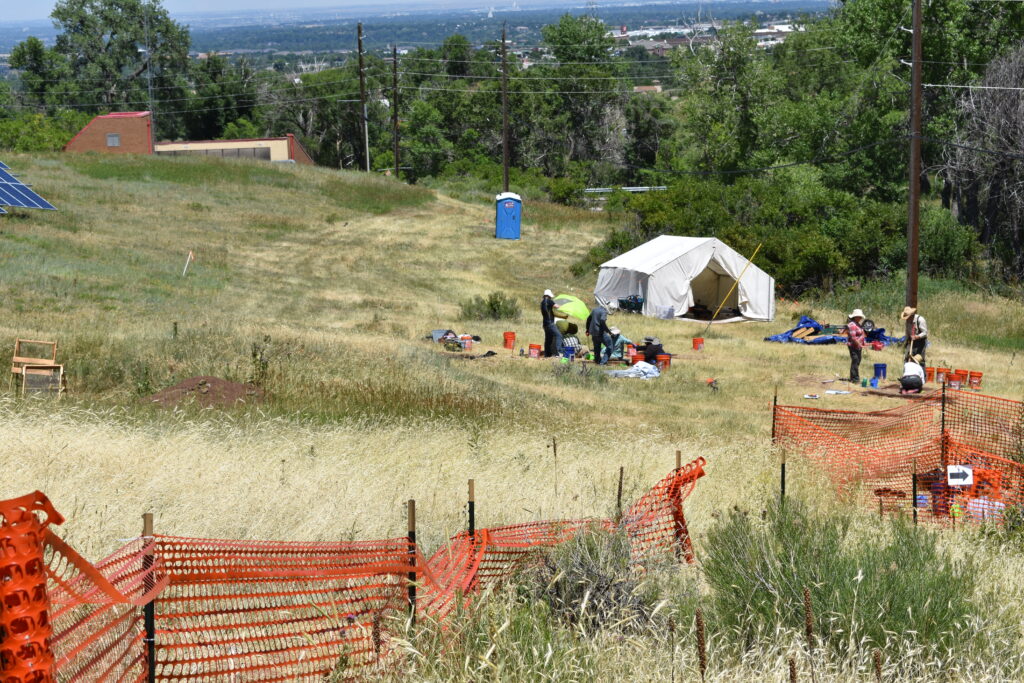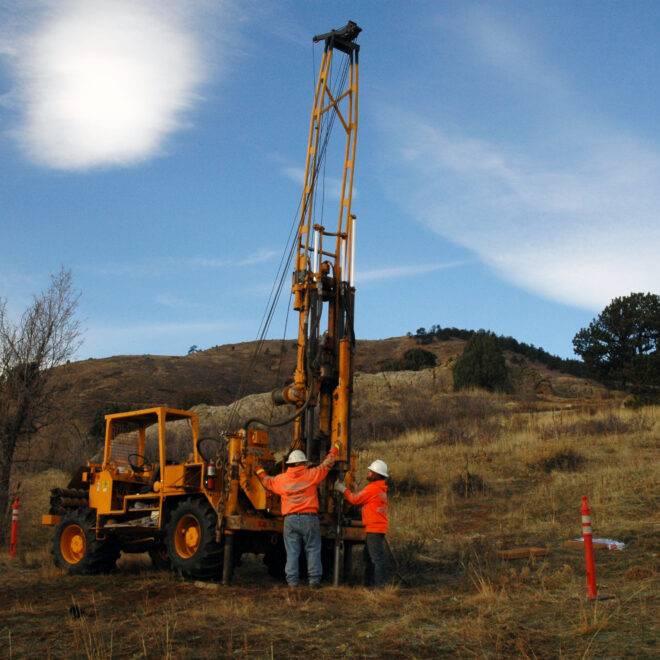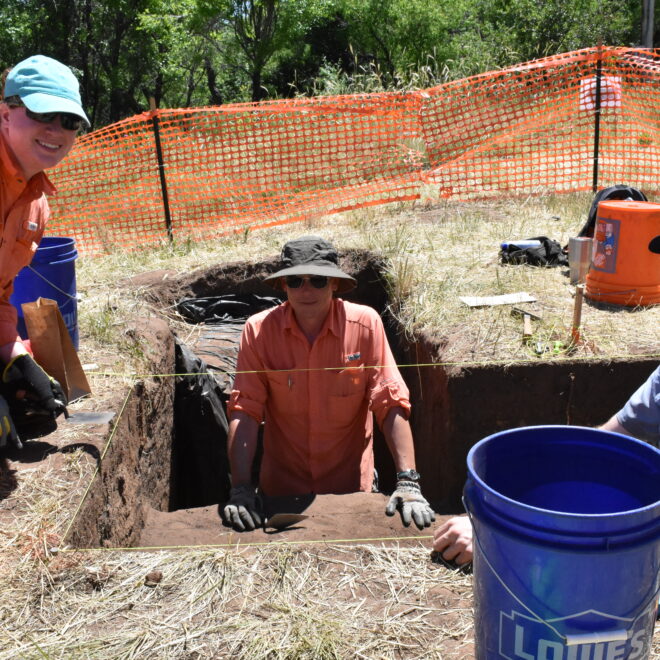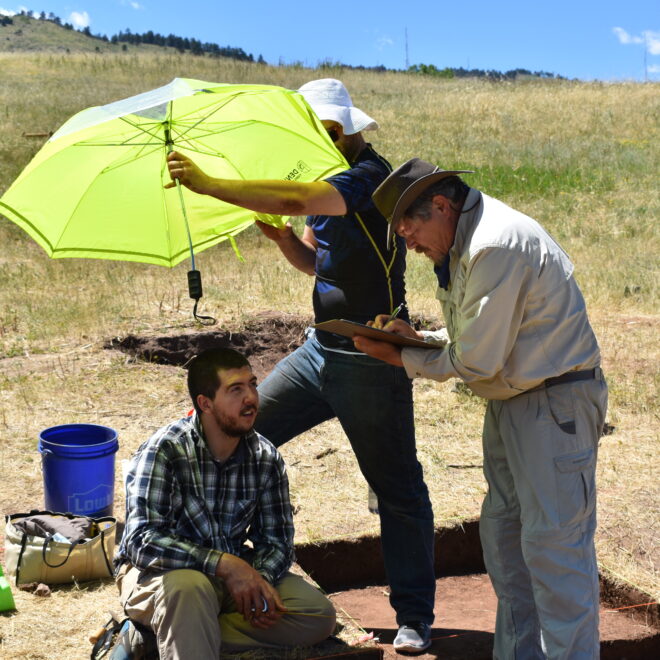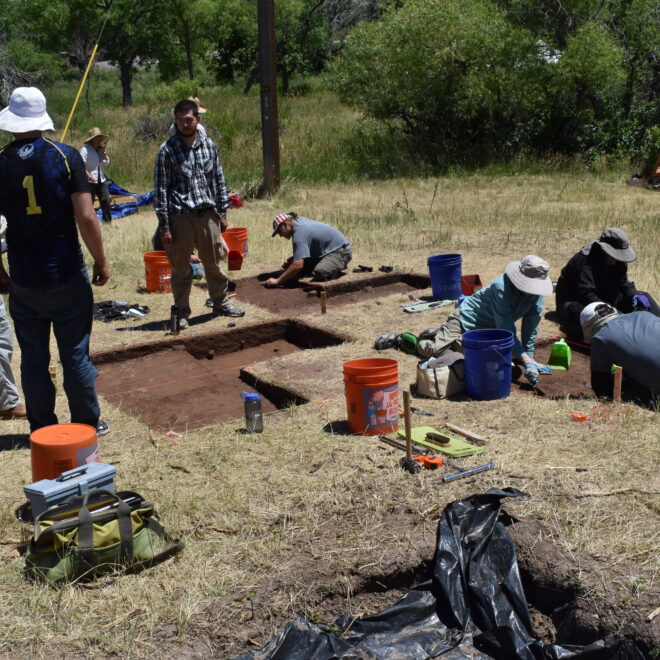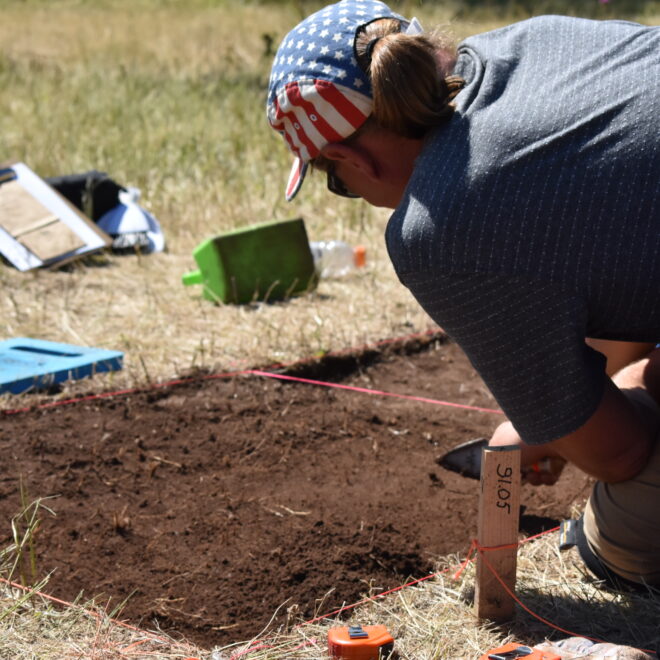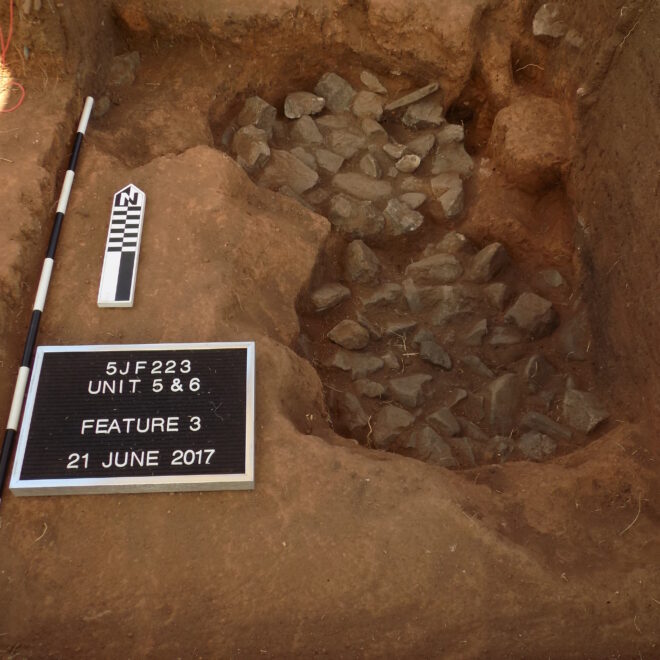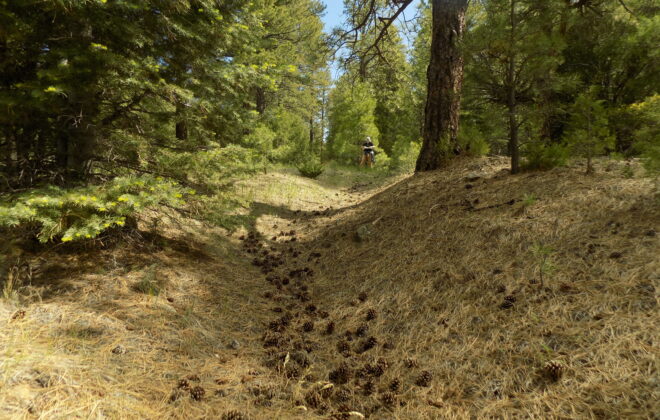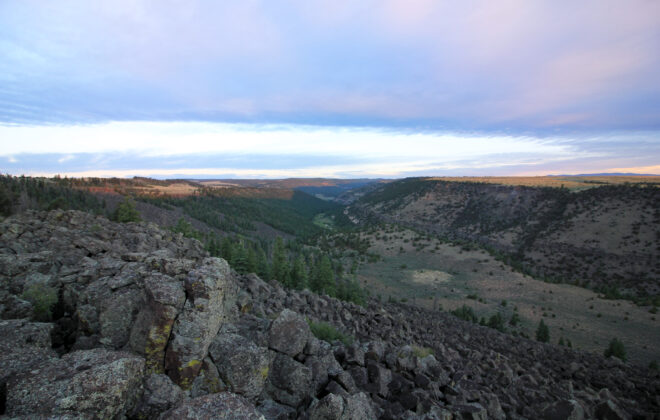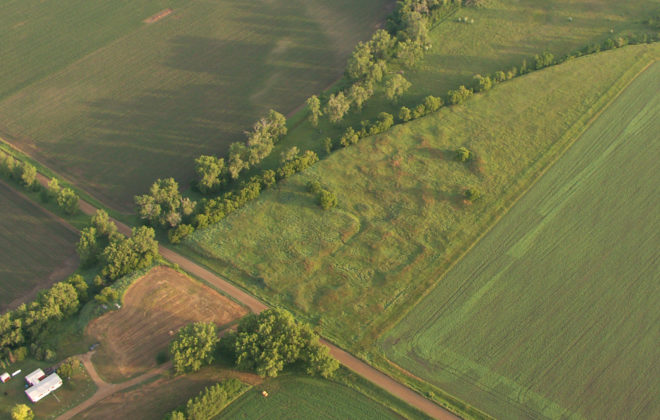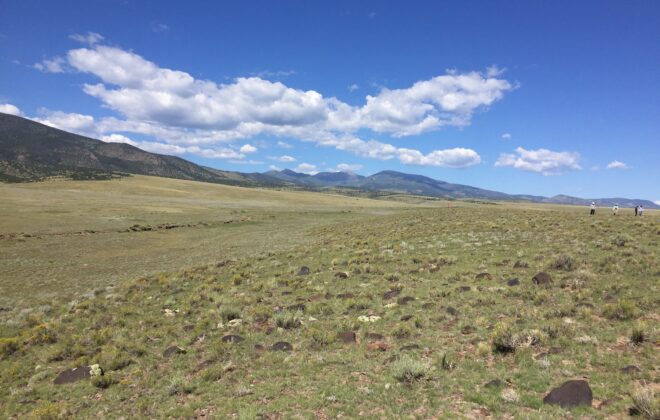Magic Mountain
The Magic Mountain site, located in a sheltered valley south of Golden, Colorado, is well known for its stratified Holocene archaeological record. For more than 30 years following the 1966 publication of Cynthia Irwin-Williams and Henry Irwin’s landmark monograph, data from the site were crucial for systematizing the archaeological record of the South Platte River basin. In 2016 the Denver Museum of Nature & Science and Paleocultural Research Group initiated a multi-year, inter-disciplinary public archaeology project at the site designed to better understand its history of occupation and its role in the regional settlement system.
A total of 59 excavation squares were distributed among six designated sites areas. The field team documented 14 American Indian features—mostly basin hearths and earth ovens—all dating to the Early Ceramic period between about 2000 and 1000 B.P. Radiocarbon data indicate frequent, although intermittent, use of the site during this entire period.
Over 25,000 modified stone artifacts were documented during the two field seasons. Over 60 percent of these are from Early Ceramic components, with some evidence of earlier (Archaic) occupations and minimal evidence of post-Early Ceramic use of the site. A variety of species are represented in the faunal data. Many are lower ranked species, like most Early Ceramic sites in the region. Bone tools and ornaments were also recovered, and ornaments were possibly being manufactured at the site during the Early Ceramic occupations. Macrofloral analysis indicates a somewhat diverse assemblage of plants were utilized by the Early Ceramic period occupants of the site.

